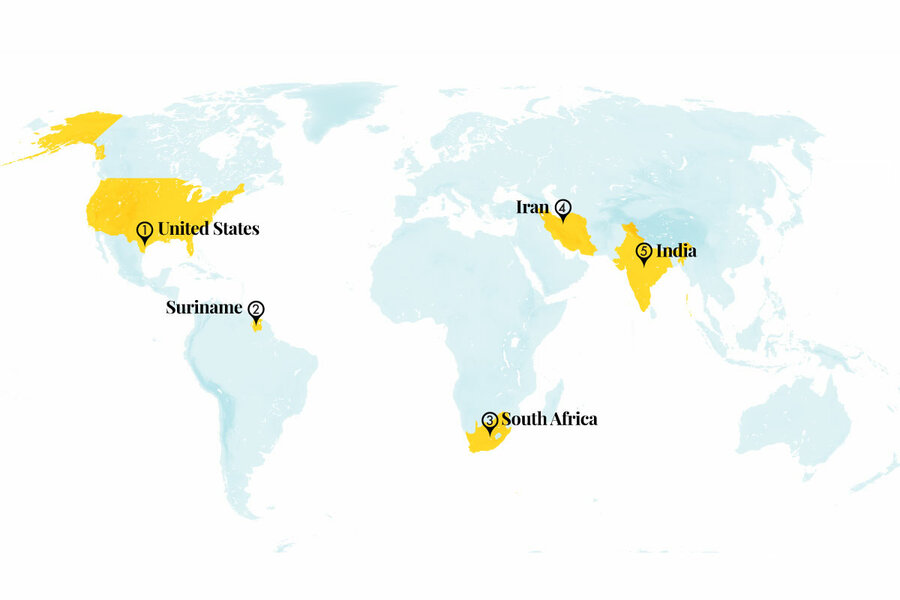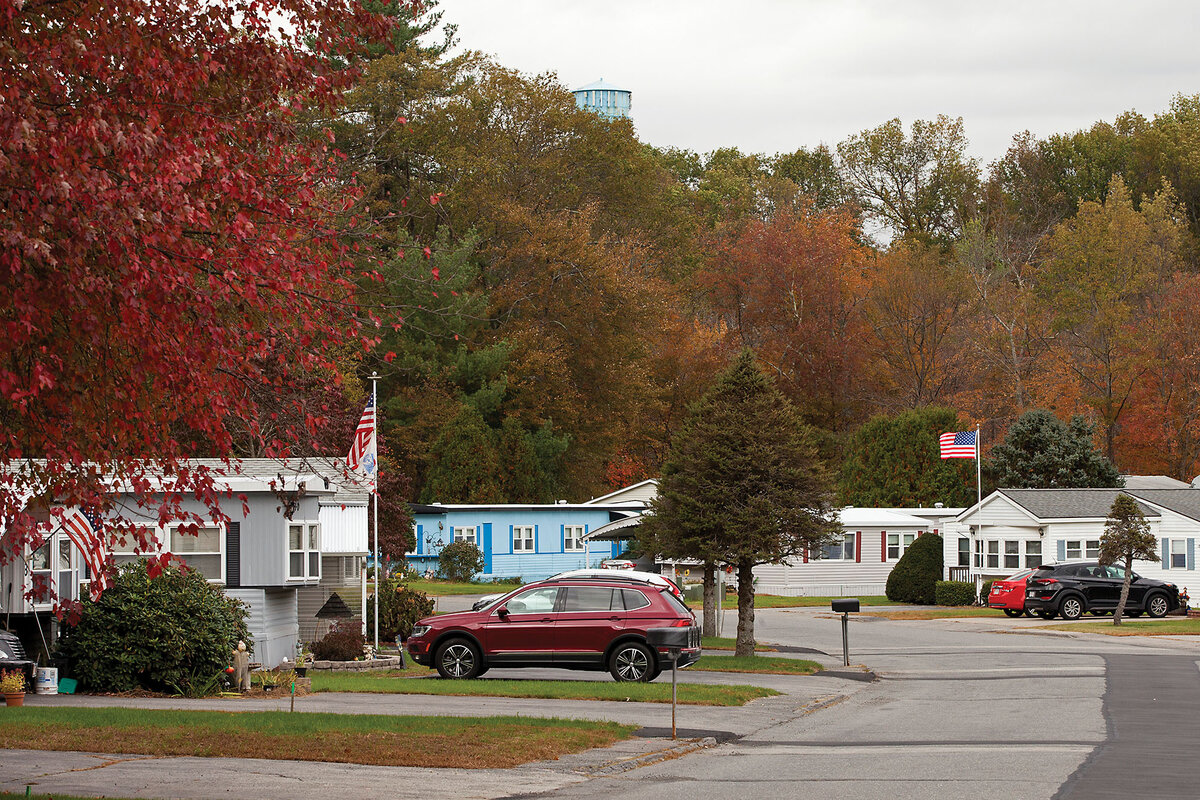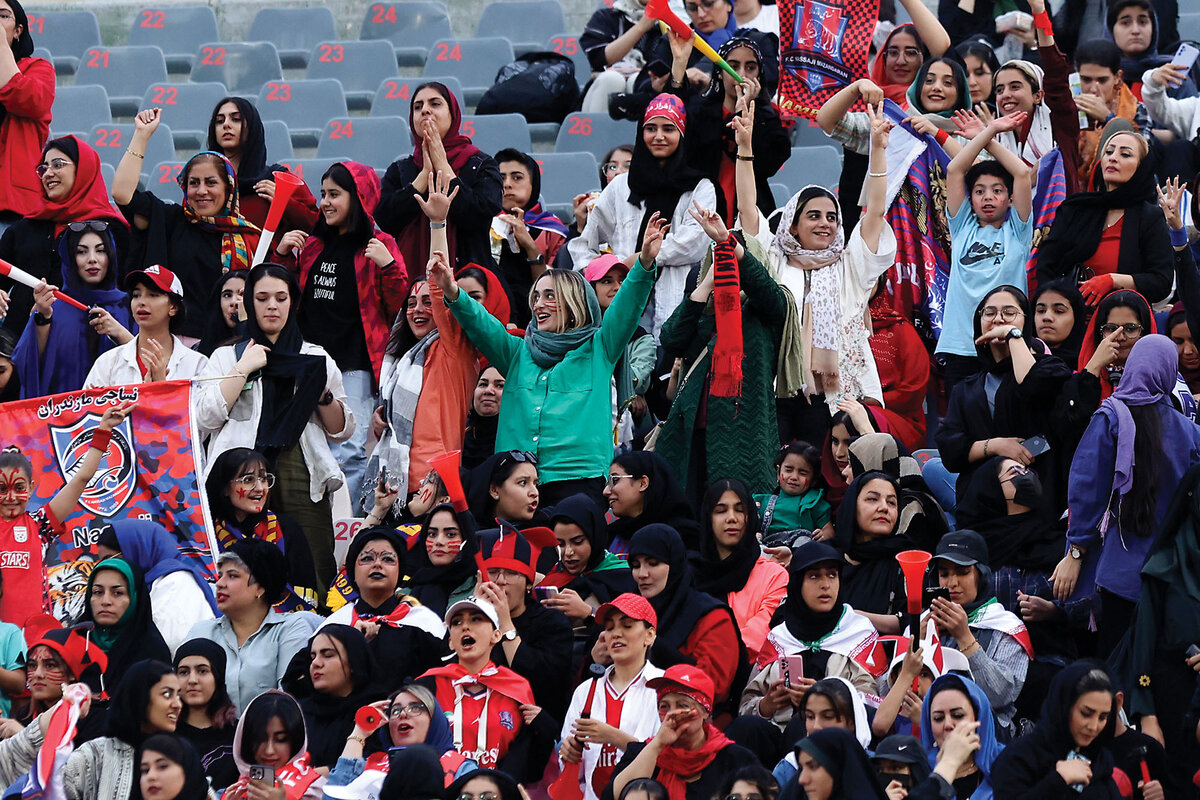Do female fans belong in stadiums? Can mobile-home owners own the land?
Loading...
1. United States
Co-ops are providing more housing security and climate resilience for mobile-home owners. Manufactured homes house over 22 million Americans and are one of the country’s largest sources of affordable housing. But with the rise in lot rents – what residents pay the landowner – people are increasingly banding together to buy their land in resident-owned cooperatives.
Manufactured-home residents began experiencing sharp rent increases about a decade ago when investment firms started buying mobile-home parks for their reliable income. But under collective ownership, residents have full control over community repairs and improvements, from solar panels to disaster preparedness. In south Texas, the predominantly Latino Pasadena Trails community installed a drainage system ahead of Hurricane Harvey in 2017 – staving off the worst of the storm’s flooding.
Why We Wrote This
In our progress roundup, belonging in the place you call home includes being allowed to watch soccer in Iran, having opportunities as a writer in India, and owning the land beneath your manufactured house in the U.S.
With a nearly 300-member network, the nonprofit ROC USA helps would-be co-ops with access to grants, loans, and logistical support. These co-ops climbed from just 200 in 2000 to 15,000 in 2019, according to a recent study. Government recognition of the importance of manufactured-home communities is increasing at all levels: Last year, Minnesota made tens of millions of funding dollars available for infrastructure, home loans, and other incentives.
Sources: Grist, Route Fifty, Northcountry Cooperative Foundation, The New Yorker, ROC USA
2. Suriname
Saamaka Maroons are growing the resilient rice of their ancestors with help from seed banks. The Saamaka, descended from enslaved Africans who escaped plantations, have cultivated “hinterland” rice varieties as a staple food for 300 years. As more extreme weather threatens the country’s rice crops, farmers are collaborating with the national rice research center to increase climate resilience and cultivation of diverse varieties.
Saamaka women do much of the work to grow the family’s rice on small, uneven plots of land. Many rice cultivars are named for the female ancestors who escaped and carried seeds off plantations in their hair. As farmer Albertina Adjako explained, some rice types are “sun-lovers” and others “water-lovers.” Planting diverse types can mean a stabler food supply, since from season to season one crop may survive while others cannot.
The government’s rice researchers and the nonprofit Crop Trust are helping Maroon communities store dozens of seed samples in the Svalbard Global Seed Vault in Norway. Jerry Tjoe Awie, head of the national center, said working with the Saamaka has been gratifying. “I come in the afternoons, when everyone is gone, and I just walk and look at the plants.”
Sources: The Guardian, Crop Trust, Slavery & Abolition
3. South Africa
A traveling caravan is fighting gendered violence by teaching women to communicate about difficult topics. About 20% of South African women have been abused by a partner, and the country has some of the highest rates of rape and femicide in the world. South Africans often don’t seek help because of doubts about the effectiveness of therapy. Local nonprofit Phola, whose name means “to heal” in the southern African language Nguni, seeks to break the stigma by delivering culturally appropriate therapy.
Phola began in 2016 after Zimbabwean psychologist Ncazelo Ncube-Mlilo struggled to translate Western therapy methods to rural Africa. Group therapy in mobile trailers or modified shipping containers allows Phola counselors to provide services to a variety of townships. Ms. Ncube-Mlilo uses collective narrative therapy, which she calls COURRAGE, to help women re-imagine their place in the world. A 2021 study said the intervention was “highly effective” at reducing symptoms of depression.
Phola also works with men and children, reaching about 324,000 people. It hopes to start a shelter for women and children who have escaped abusive partners. Ms. Ncube-Mlilo emphasizes the importance of reaching across cultures. “You need to acknowledge culture when we try to find ways to heal people,” she said. “Culture can help us to help them.”
Sources: Positive News, Phola, International Journal of Social Psychiatry
4. Iran
Iranian women are making small gains toward freedom in football and fashion. After Mahsa Amini’s death in police custody in September 2022, protests against the restrictions governing women’s daily life persisted for months. Women are still defying rules requiring hijabs. But fashion designers have also found some leeway, with brighter colors and what many consider more modern designs. Exhibited in a former royal palace in January, a fashion show included black chadors alongside floral patterns and bright colors.
In December, women cheered for Tehran soccer teams in a popular crosstown rivalry, one of only a handful of times that women have attended games in arenas in the past several years. Some 3,000 seats were allocated to women at the Azadi Stadium for a match between rivals Esteghlal and Persepolis. Since 2005, the group Open Stadiums has pressed authorities for an end to the four-decade ban on women in stadiums and campaigned for FIFA to take a stronger stance against Iran’s policies.
Last October, Iran’s women’s soccer team lost to Australia in an Olympics qualifier. Former Matildas vice captain Moya Dodd, who first met activists in Iran in 2013, noted that the women would never have had the opportunity to even watch matches in a big arena at home. “It’s a very difficult road for them,” she said. “I did appreciate the resilience and just the stick-with-it-ness” of the Iranian players.
Sources: Agence France-Presse, Human Rights Watch, Australian Broadcasting Corp., ABC News
5. India
Dalit writers are expanding India’s literary canon, challenging age-old hierarchies based on caste. While caste discrimination has been outlawed for decades, Dalits have long inhabited the lowest social rung in Indian society, with few opportunities on the literary scene. Fewer than half a percent of books published in India in 2017 had Dalit authors. In recent years, some publishers – many of them small and independent – have defied the literary establishment by publishing more books written by Dalit writers, who say that discrimination shapes much of their experience.
Panther’s Paw Publication is one of a handful of publishing houses promoting Dalit and anti-caste literature in the country. Writer Yogesh Maitreya established the label in 2016 after meeting the leader of the Dalit Panthers – a social organization combating caste discrimination and drawing inspiration from America’s Black Panther Party. Panther’s Paw has released 16 books written by Dalit authors. Publishing house Navayana, based in New Delhi, bucked the trend in 2003 when it became the only English-language publisher releasing anti-caste literature.
Works by Dalit writers such as “Caste Matters” by Suraj Yengde and “Ants Among Elephants” by Sujatha Gidla have garnered praise globally. And other efforts, such as writer and co-founder Christina Dhanuja’s establishment of Dalit History Month, also promote Dalit literature.
Source: South China Morning Post








